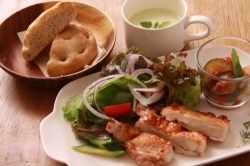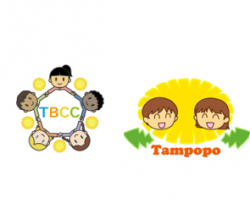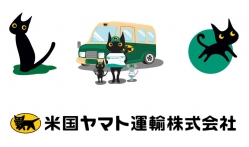Info Type
View Option
Sort by Month
Sort by Category
Back
This text has been translated by auto-translation. There may be a slight difference between the original text and the translation. (Original Language: 日本語)
2022/8/2 - 2022/9/3 / 千葉県 佐倉市 / Other

| Venue | National Museum of Japanese History, General Exhibition, Room 3, Special Exhibition Room |
|---|---|
| Address | 285-8502 千葉県 佐倉市 城内町117 |
| Date | 2022/8/2 - 2022/9/3 |
| Time | 9:30 minute(s) - 17:00 minute(s) |
- [Time detail]
・ Last admission 30 minutes before closing.
・ Closed : Mondays ( If Monday is a holiday, the museum will be open and closed the following day *Open on August 15 ( Monday ) )
- [Getting here]
Train : Approx. 15 min. walk or 5 min. by bus from Keisei Sakura Sta. on the Keisei Main Line, or approx. 15 min. by bus from Sakura Sta. on the JR Sobu Main Line.
Car : Approximately 15 minutes from Yotsukaido IC or Sakura IC on Higashi-Kanto Expressway.
- [Venue detail]
Room3 Special Exhibition: Early Modern Period through the lens of "Objects" "The Spread of the Suikoden Boom
A glimpse of the spread of the Suikoden boom in popular culture in the late Edo period !.
- [Contact]
- 050-5541-8600 ( Hello Dial )
- [Registrant]国立歴史民俗博物館
- [Language]日本語
- Posted : 2022/07/03
- Published : 2022/07/03
- Changed : 2022/07/03
- Total View : 659 persons
- Find local business with Town Guide
-

-
+81-438-38-4368hanahaco
-
- Expert in education for overseas childre...

-
Kinder Class ~ Japanese language supplementary school with class lessons up to the third grade of junior high school and tutoring in the cram school section. Please consult with us about the hours ・ a...
+1 (657) 212-5377Gakusyujyuku Pi:k
-

We treat various kinds of pain wi... -
Pain treatment begins with accurate diagnosis. Japanese doctors licensed in both Japan and the U.S. will carefully examine you in Japanese ・ and treat you. If you are suffering from pain, please fee...
(310) 954-9583Haruo Arita MD
-
- ✨ Dandelion for Parents ✨ At our day-car...

-
When it comes to bilingual childcare, Dandelion Club ! Irvine's Dandelion Daycare ( from 6 months old ) Santa Ana's Dandelion Bilingual Children's Center ( from age 2 ) Our school is face-to-face,...
+1 (310) 666-5126TampopoClub,inc.
-
- 💜Over 1000 cases per year 🌹 Painless Art...

-
Over 1000 cases per year. Leave your art make-up to Belleote with our trust and achievement ! Special price ! No extra charge for options. 💜Original 3D Brow Full Course $ 300 (Microblading + Nano...
+1 (424) 527-7330BELLUTE beauty studio
-
- TOGO ・ We do delivery ! Enjoy our authen...

-
Okonomiyaki ・ Teppan-yaki Chinchikurin with many locations in Hiroshima and Tokyo. You can enjoy authentic Hiroshima okonomiyaki in Los Angeles. Hiroshima Okonomiyaki Shoburiyaki Shrimp Mayo Yaki ...
+1 (310) 478-0521CHINCHIKURIN
-

-
+1 (646) 590-3276Ramen Ishida
-
- Dental clinic in New York City. Technolo...

-
■ Pain Pain-free treatment is ideal. We have achieved results in minimizing pain and suffering during treatment. ■ About Front Teeth Temporary Teeth ( Prototypes ) are made and an ideal model is m...
+1 (212) 758-9965Shunzo Ozawa D.D.S.
-
- Free initial consultation ! You can cons...

-
Our attorneys and staff speak Japanese. At Aina Law Office, our attorneys can speak Japanese themselves. Immigration ( Visa [B1/B2, E1/E2, F/M, H1B, K-1, L, O,P, T,U], Permanent Residence [Family, Emp...
+1 (808) 380-3075Aina Law Office
-
- The Japanese Association of Houston is f...

-
It is a non-profit, all-volunteer organization of Japanese, Japanese-Americans, and others interested in Japan living in the Houston, Texas metropolitan area.
Japanese Association of Greater Houston
-
- ~ Glass City Toyama ~

-
As the culmination of the city's urban development efforts aimed at creating a "City of Glass Toyama," the museum will be located in the "Toyama Kirari" complex, which also houses the main building of...
+81-76-461-3100富山市ガラス美術館
-
- We are a pediatric clinic located in Tor...

-
We provide pediatric care in Japanese in Torrance, California. It is located right next to Torrance Memorial Hospital. The director has experience as a pediatrician in Japan and is well versed in the...
+1 (310) 483-7880Naoko Matsumoto, M.D., Inc.
-
- A "Museum of Encounters and the Five Sen...

-
Oita Prefecture is warm, scenic, and rich in natural beauty, and has a soft, gentle prefectural character. Oita Prefecture has accepted and absorbed different cultures from Asia and the West, blending...
+81-97-533-4500大分県立美術館
-
- Handling TA-Q-BIN to Japan, air import/e...

-
日本への宅急便、航空輸出入、海上輸出入、倉庫ロジ事業、お引越しの取り扱い。お荷物、物流のことはなんでもご相談下さい!(安心の日本語対応)
+1 (817) 481-9980Yamato Transport USA / Dallas Branch
-
- We can work with you on any problem ? yo...

-
True Resource Coaching&Consulting About True Resource's Coaching and Consulting What are your problems in order to live in the US cheerfully and happily every day? ? Do you have any problems in...
+1 (424) 625-8720True Resource Coaching & Consulting






In addition, "Suikoden" was not only used as a subject in various other fields, such as kyoka and fairs, but its image was also superimposed on kodan and ukiyoe, which depicted chivalrous men and exponents in the late Edo period. In this way, "Suikoden" became a rich source of inspiration for the popular culture of the late Edo period.
[Admission]
Adults 600 yen, college students 250 yen, high school students and younger free
*The general exhibition is also available.
*People with disabilities may enter the museum free of charge with a caregiver upon presentation of a disability certificate.
*High school and university students must show their student ID.
*Please show your museum ticket stub to enter the Botanical Garden of Life on the same day.
Show the stub from the Botanical Garden and get a discount for admission to the Museum on the same day.